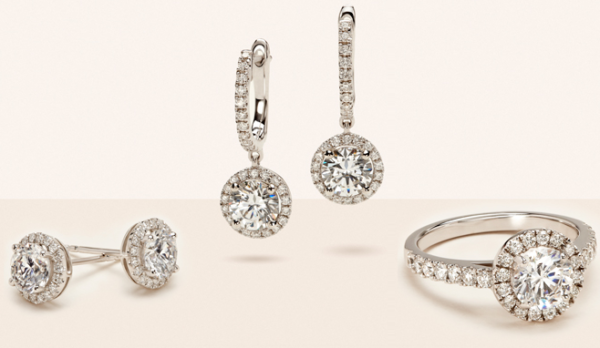Know The Four C’s Before Diamond Shopping
Say you’re on the hunt for the perfect engagement ring or something special to add sparkle to your outfit but on a budget. Mining through the field of diamond jewelry stores and online boutiques can be daunting. To find the perfect bling for your buck, there are a few things you must remember to make the diamond shopping process a bit easier.
For starters, the quality of a diamond will affect the price. Before you even start shopping, you must acquaint yourself with the Four C’s.

The Four C’s
The Four C’s refer to carat, color, clarity and cut, the four characteristics that determine a diamond’s quality. The GIA’s diamond-grading system, which factors in those C’s, has become the industry standard for professional jewelers. Understanding these grades before you make a purchase will end up saving you money.
Carat is a weight measurement. A 1-carat diamond weighs 200 milligrams. But there’s no ideal size for a diamond. It depends on your budget and taste. Small diamonds are cheaper than large diamonds. A ring with three small diamonds totaling 1 carat costs less than a single 1-carat stone of similar quality.
Color is graded by letter, starting with D for rare, colorless diamonds. E and F are considered excellent, but G or H diamonds will look just as good to the naked eye. Down the scale, you’ll notice differences. ‘‘If you put a K color beside a G color, you’ll notice more yellow in the K,’’ said Russell Shor, of the Gemological Institute.
Clarity measures diamond flaws, called inclusions, which might appear as tiny spots, clouds, or cavities. SI stands for ‘‘slightly included.’’ VS is a better grade, ‘‘very slightly included.’’ VVS is even higher, ‘‘very, very slightly included.’’ Most inclusions in the VVS-SI range cannot be seen by the untrained eye ‘‘unless someone tells you where it is,’’ Shor said.
Cut measures workmanship, not a diamond’s inherent qualities. The way a stone is cut enhances sparkle and luminosity and can hide flaws. The best cut rating, ideal, is rare
Don’t forget to ask for diamond grading reports from your retailer. These reports offer an impartial evaluation of the diamond’s quality, making them the most concrete way to know what you’re getting. They serve as proof of the grading claims a jeweler might promote on its ads or product tags.
Ready to go shopping? click here


